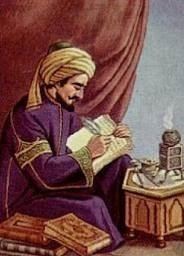Name Taqi al-Maqrizi Occupation historian, writer Nationality Egyptian | Role Historian | |
 | ||
Notable works Mawaiz wa al-'i'tibar bi dhikr al-khitat wa al-'athar (2 vols., Bulaq, 1854) Books A History of the Ayyubid Sultans of Egypt | ||
al maqrizi
Taqi al-Din Abu al-Abbas Ahmad ibn 'Ali ibn 'Abd al-Qadir ibn Muhammad al-Maqrizi (1364–1442) (Arabic: تقى الدين أحمد بن على بن عبد القادر بن محمد المقريزى) was an Egyptian historian more commonly known as al-Maqrizi or Makrizi. Although he was "a Mamluk-era historian and himself a Sunni Muslim, he is remarkable in this context for his unusually keen interest in the Isma'ili Fatimid dynasty and its role in Egyptian history."
Contents
Al maqrizi
Life
Maqrizi was born in Cairo and spent most of his life in Egypt, where he was trained in the Hanafite school of law. Later, he switched to the Shafi'ite school and finally to the Zahirite school. Maqrizi studied theology under one of the primary masterminds behind the Zahiri Revolt, and his vocal support and sympathy with that revolt against the Mamluks likely cost him higher administrative and clerical positions with the Mamluk regime. The name Maqrizi was an attribution to a quarter of the city of Baalbek, from where his paternal grandparents hailed. Maqrizi confessed to his contemporaries that he believed that he was related to the Fatimids through the son of al-Muizz. Ibn Hajar preserves the most memorable account: his father, as they entered the al-Hakim Mosque one day, told him "My son, you are entering the mosque of your ancestor." However, his father also instructed al-Maqrizi not to reveal this information to anyone he could not trust; Walker concludes:

In 1385, he went on the Islamic pilgrimage, the Hajj. For some time he was secretary in a government office, and in 1399 became inspector of markets for Cairo and northern Egypt. This post he soon gave up to become a preacher at the Mosque of 'Amr ibn al 'As, president of the al-Hakim Mosque, and a lecturer on tradition. In 1408, he went to Damascus to become inspector of the Qalanisryya and lecturer. Later, he retired into private life at Cairo.
In 1430, he again went on Hajj with his family and travelled for some five years. His learning was great, his observation accurate and his judgement good, but his books are largely compilations, and he does not always acknowledge the sources upon which he relied.
Writings
Most of Al-Maqrizi's works, exceeding 200, are concerned with Egypt. The most important is the Mawaiz wa al-'i'tibar bi dhikr al-khitat wa al-'athar (2 vols., Bulaq, 1854), translated into French by Urbain Bouriant as Description topographique et historique de l'Égypte (Paris, 1895–1900; compare A. R. Guest, "A List of Writers, Books and other Authorities mentioned by El Maqrizi in his Khitat," in Journal of the Royal Asiatic Society, 1902, pp. 103–125).
Of his History of the Fatimites an extract was published by J.G.L. Kosegarten in his Chrestomathia (Leipzig, 1828), pp. 115–123; the History of the Ayyubit and Mameluke Rulers has been translated into French by Etienne Marc Quatremère (2 vols., Paris, 1837–1845).
Maqrizi began a large work called the Muqaffa, an encyclopedia of Egyptian biography in alphabetic order. Another Egyptian historian, al-Sakhawi, believed this would require eighty volumes to complete, but only sixteen were written. Three autograph volumes exist in manuscript in Leiden and one in Paris.
